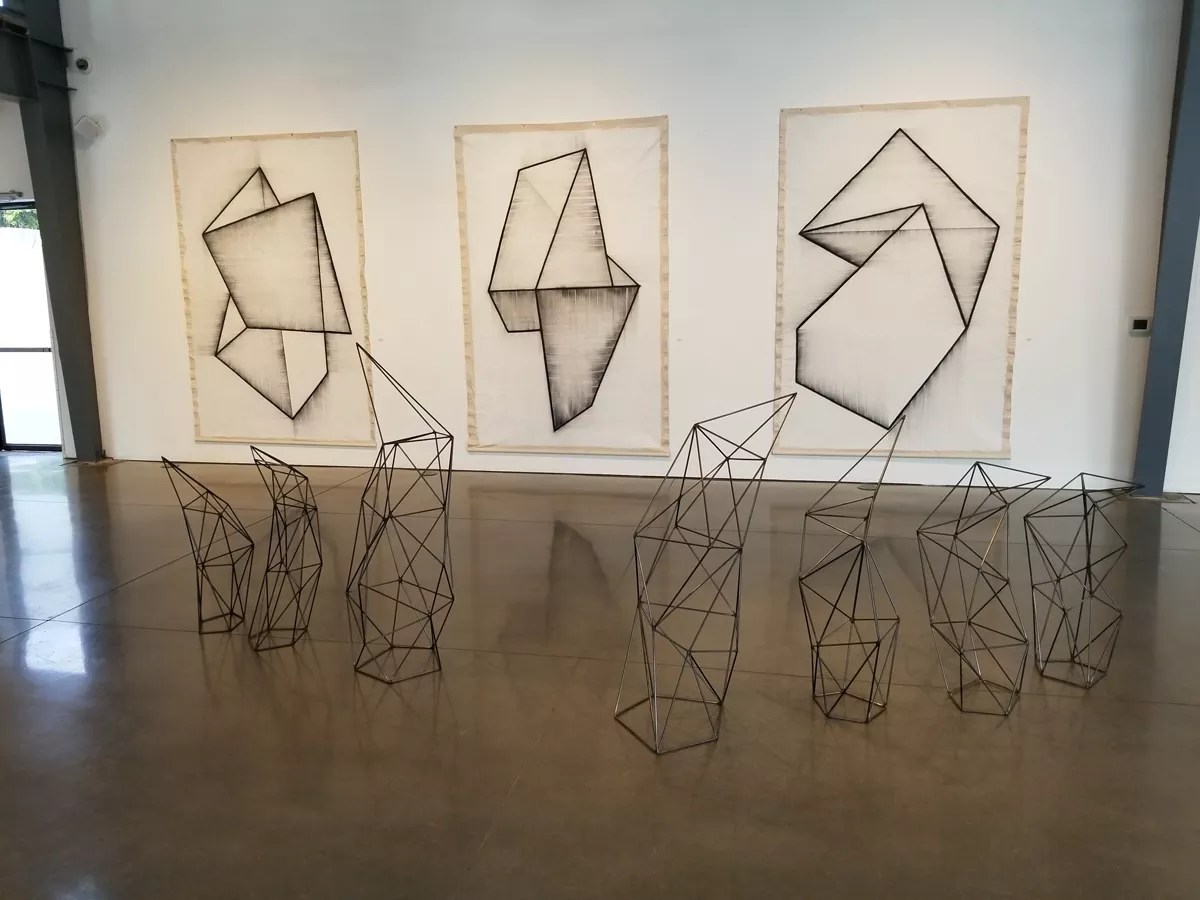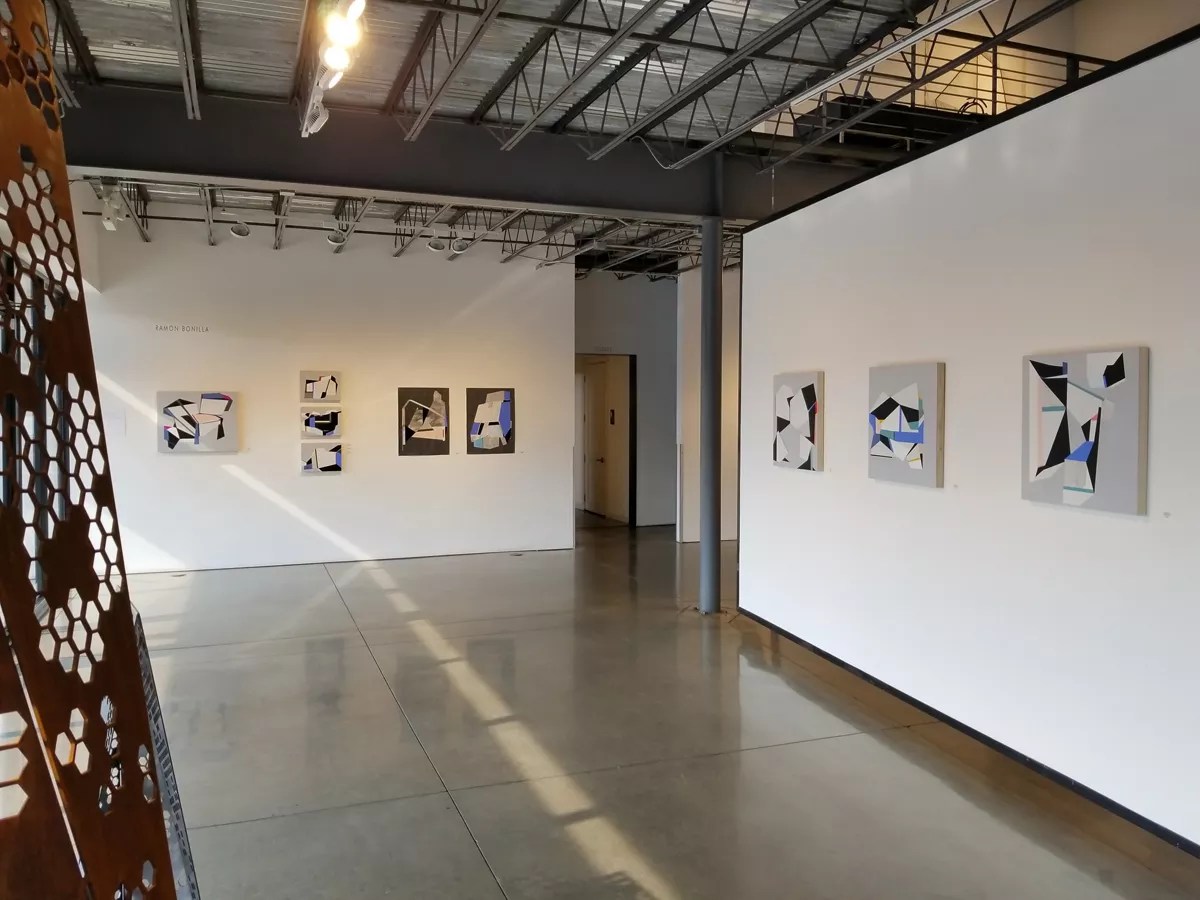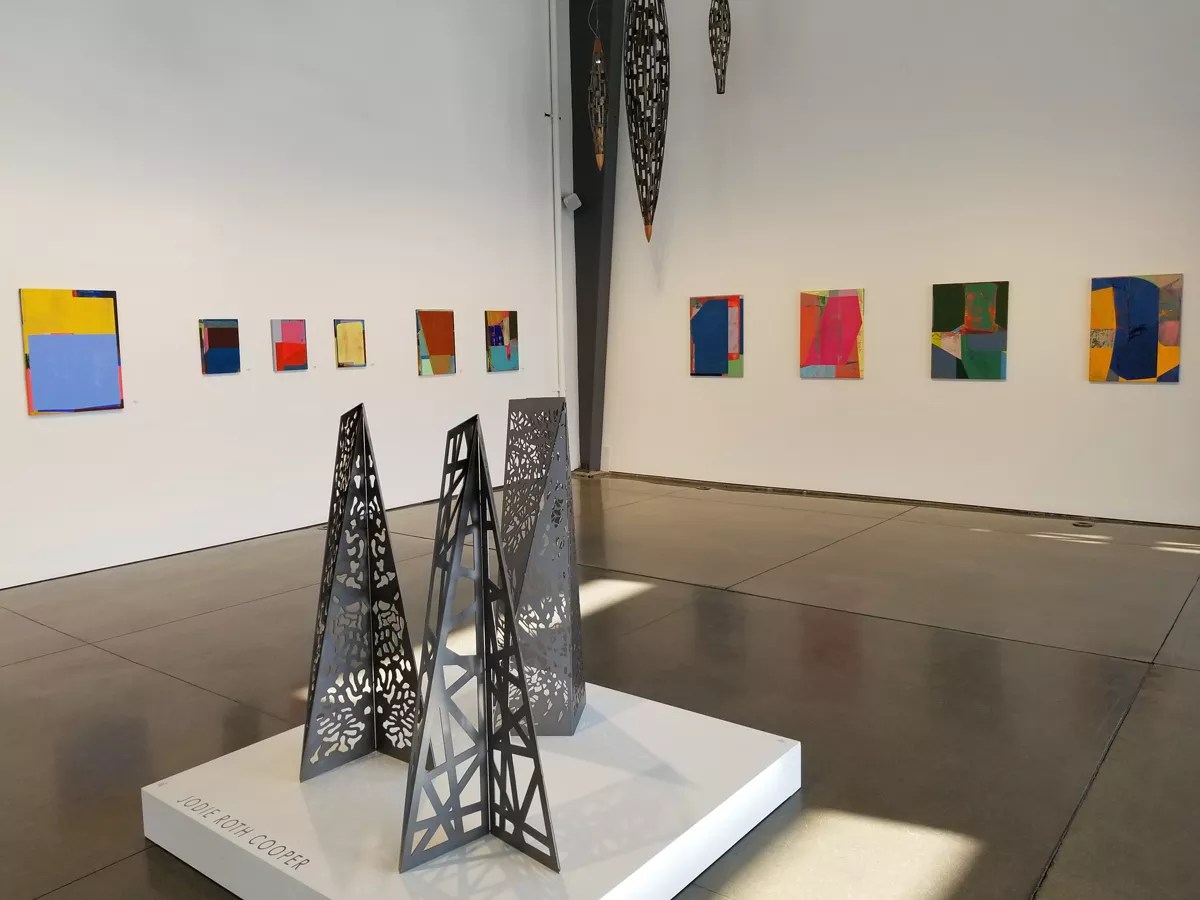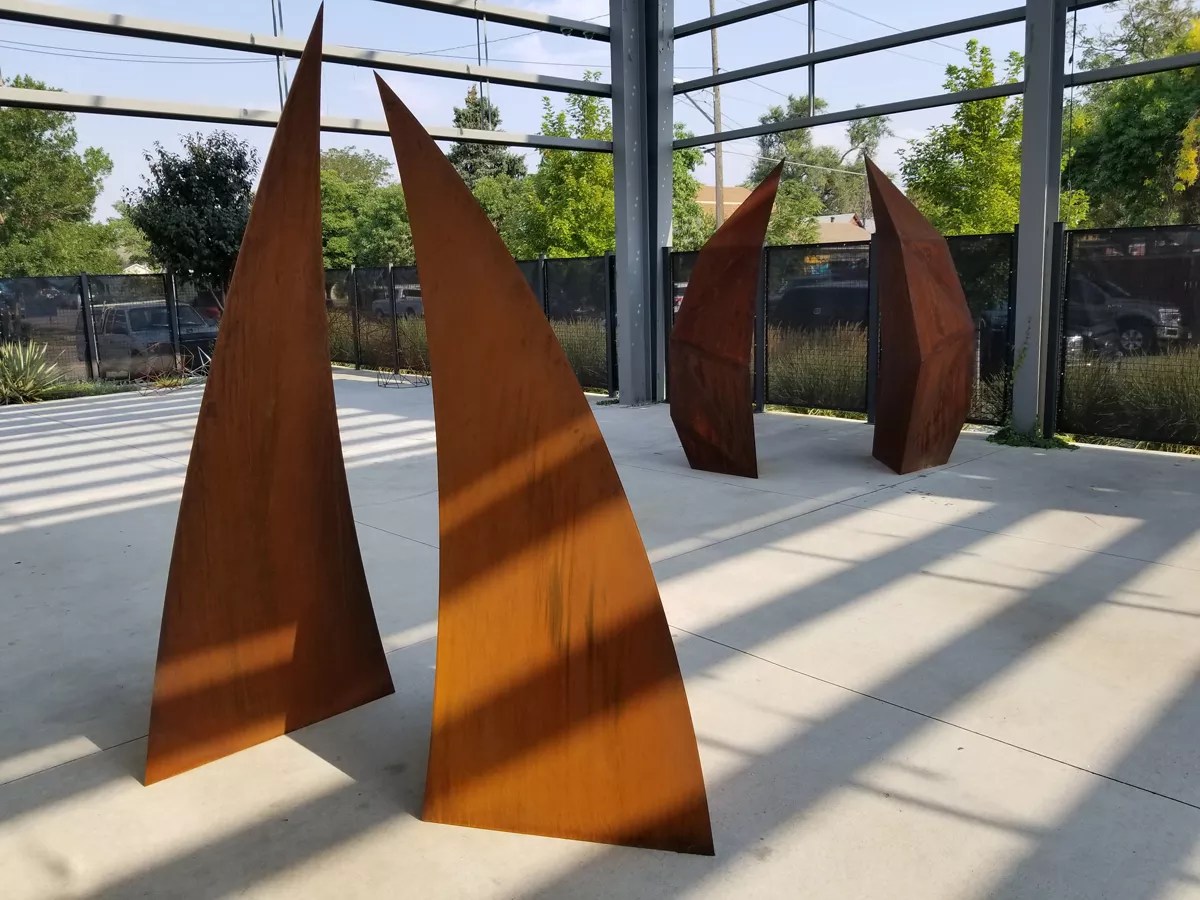
Michael Burnett

Audio By Carbonatix
You can tell just by looking at Space Gallery‘s sleek, neo-modern building that owner Michael Burnett has a taste for geometric, if asymmetrical, compositions. So the current show he’s curated, Hard Lines: An Exploration of Geometry, comprising paintings and sculptures with non-objective linear arrangements, isn’t unexpected. (What was, however, was the explosion that leveled a building directly across West Fourth Avenue last week, knocking some of the paintings in Hard Lines right off the wall.)
Space is extremely large, and subdivided to allow for group shows in which each artist is assigned a specific and discrete space. Each participant is essentially given enough room to mount the equivalent of a small solo, which is then set within the context of the larger, multi-artist presentation.
Hard Lines begins in the entry with paintings by Ramón Bonilla, a Denver artist who was born and educated in Puerto Rico. Working in both acrylic on paper and acrylic on panel, Bonilla creates various free-hand, hard-edged forms, many with triangular, or at least triangulated, qualities, using diagonal lines to suggest three-dimensional space. Although they appear to be completely abstract, these paintings are based on Bonilla’s memories of specific spaces, though he does not intend them to be strict representations, but rather non-narrative impressions in which the natural world merges with the built environment.

Paintings on panel (left and right) and paper (center) by Ram
Michael Burnett
Bonilla is clearly influenced by the forms found in architectural solids, but he also taps into the history of constructivist and minimalist painting of the twentieth century, as well as cutting-edge digital rendering, specifically low-poly art, in which a small number of polygons are used to express 3-D shapes. In “Klugevilla,” for example, an extremely complex cluster of shapes in black, white, blue and other shades seems to float on a gray field. Bonilla suggests space in this painting, as he does in others, but instead of a consistent single-point perspective, he uses colliding lines of depth, which adds to the visual complexity of the floating forms.
In the north gallery and extending into the main space, Frank T. Martinez explores similar concepts in three ways. The first pieces are acrylics on panel in which a unified shape of geometric elements, including rectangles and triangles, are painted in strong colors, with stencils adding patterned elements. A close look reveals that the margins between the colors are as solid as walls, as are the margins between the patterns and the background. The second group is all small graphite-on-gesso drawings that are much more subtle than the paintings, with the origami-like folded shapes less crisply rendered owing to the inclusion of shading. In the main space are a set of monumental wall hangings on gigantic sheets of unstretched canvas in graphite on gesso that are held to the wall by grommets; it soon becomes apparent that the graphite drawings we saw in the side gallery were preliminary sketches for these, as each large work corresponds directly to a smaller one. Martinez, who is also based in Denver, has been exploring non-objective abstraction for more than a decade, and these latest creations are among the best I’ve seen.

Howard Hersh’s paintings on the walls, with Jodie Roth Cooper’s sculptures in foreground.
Michael Burnett
Across from the Martinez wall hangings are conceptual hybrids of painting and wall sculpture by Bay Area artist Howard Hersh. In terms of composition and palette, they represent a subtle but clear aesthetic change from what Bonilla and Martinez are doing. For these works, Hersh has built armatures out of strips of unfinished wood that have been carefully joined. He uses these support systems to hold his multi-panel field paintings, with the frameworks hidden in some and revealed in others. Hersh’s pieces are exquisitely crafted, like fine furniture, and his all-over paintings meticulously carried out. A strong signature example is “Skin Deep, 18-3,” in which an even grid made of wood is set hard against the wall. Mounted on top, raised up on blocks of wood set on a diamond, is a two-part painted picture plane with a triangular cut-out in the center, revealing the wooden grid behind it. Taking a slightly different tack is “Migration, 18-3,” with a skeletal box made of wooden strips hung on the wall to hold a series of black paintings folded like a screen. The combination of the materials and austere palettes Hersh uses gives this section of the show an elegant serenity.

Anthony Falcetta’s paintings (background), with Jodie Roth Cooper’s sculptures (foreground).
Michael Burnett
Taking over most of the rest of the wall space in the main room are paintings by Anthony Falcetta, a Boston-area artist. Falcetta’s approach to geometric abstraction is much looser and more expressionistic than that of the other artists, though he also relies on big, bold shapes to create visual interest. Some of these shapes are hard-edged and some are not, but all are filled in with painterly flourishes rather than the smoother, well-blended finishes that are standard in this style of work. In a painting such as “focus puller,” in acrylic and gypsum, curving shapes are laid over one another with the paint applied as veils and the lower levels seeping through to the surface. Falcetta’s sense for color is sensational, and he’s constructed very separate successful schemes for the different paintings, juggling deep tones with bright ones. These works are easel-sized, but they have an emphatic charisma that makes them seem larger, which is why they are able to carry the two-story-high walls at Space.

Jodie Roth Cooper’s sculptures in the outdoor sculpture garden.
Michael Burnett
The last artist in Hard Lines is Denver sculptor Jodie Roth Cooper, whose work is displayed not only throughout the gallery, but also in the sculpture garden outside. Cooper is known for his steel sculptures that join straight lengths of steel rods to create dynamic shapes. They are definitely linked to the low-poly approach to digital rendering that Bonilla cites in his work, except Roth puts his shapes in actual space instead of on a flat surface.
Quite a few of these works are displayed here, including a marvelous family group scattered around the main room. But there are also pieces that represent new directions, including folded planes of steel that have been pierced using a torch to carry out automatist organic patterns that, as with the skeletal pieces, are simultaneously simple and complex. A more significant change is seen in the large works sited outside, which take the form of totemic shapes made from rusted steel sheets. Though these shapes seem simple at first, some actually have fairly elaborate profiles; it’s as though Roth put skins on the skeletal pieces. They have a strong sense of monumentality, a clear and impressive break from the inherent delicacy of both the skeletal and pierced works.
This show is proof of Burnett’s greatest skill: sensitively weaving various semi-autonomous parts together into something seamless.
Hard Lines, through September 22 at Space Gallery, 400 Santa Fe Drive, 303-993-3321, spacegallery.org.